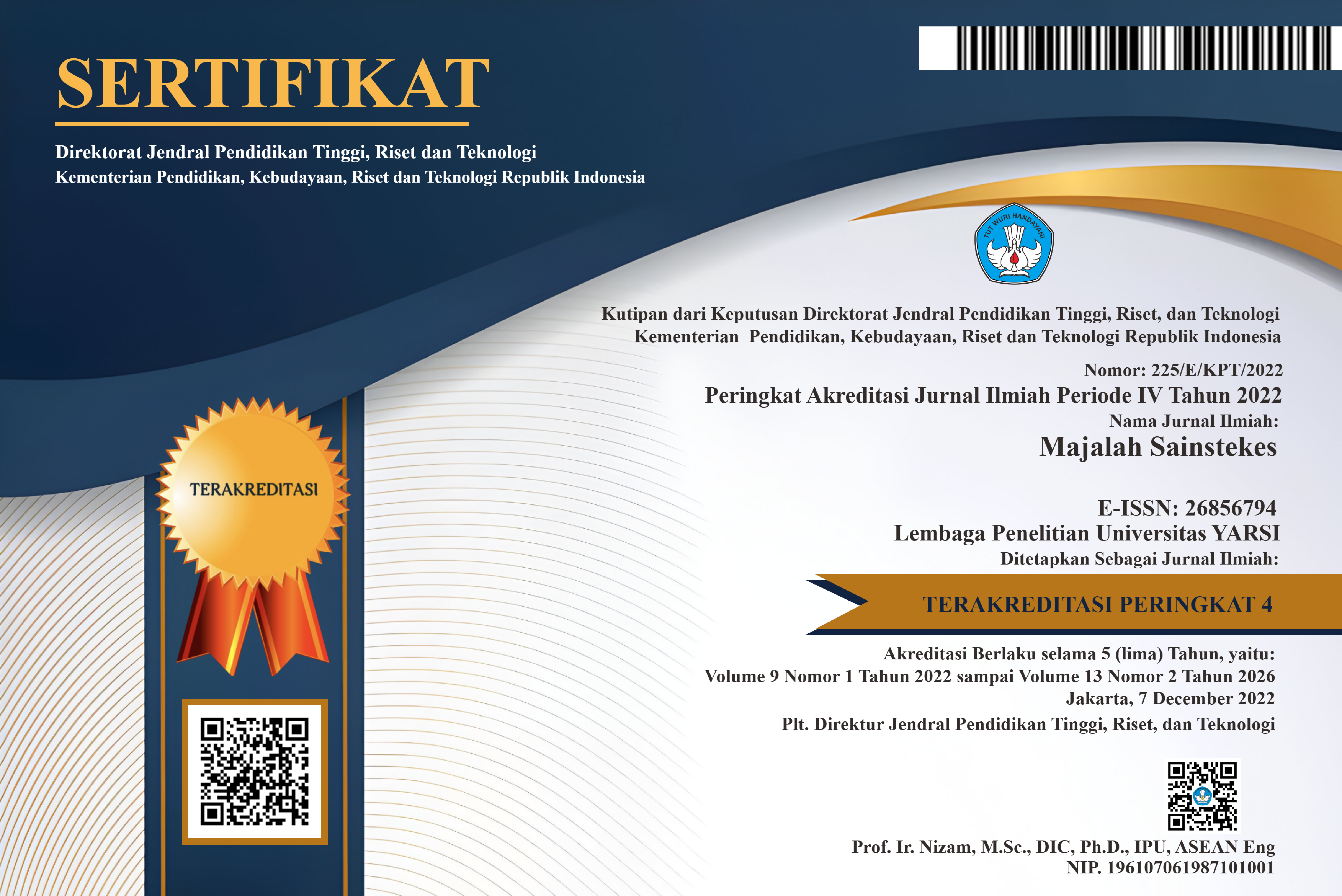Protein S100 sebagai Petanda Kerusakan Otak pada Cedera Otak Ringan dan Sedang
Keywords:
healthy people, brain injury, at admission, few hours post trauma, few days of hospitalization, S100 protein.Abstract
Brain injury becomes worldwide public health issue since it may cause disability and mortality. The diagnosis of brain injury is made based on clinical neurology examination, and CT scan or MRI. Serum S100 protein examination in mild and moderate brain injury patients is needed to detect and evaluate the presence of post traumatic brain injury. This research subject is healthy people and patients with mild and moderate brain injury, based on their GCS grade, clinical neurologic examination, and CT scan. On these patients, the blood for S100 protein examination is taken at admission, 6 and 24 hours post trauma, and last day of hospitalization. Examination of a serum S100 protein is conducted using ECLIA method. There is significant difference (p value 0,001) in mild or moderate brain injury patients in all serum S100 protein. The peak level of serum S100 protein reached at 6 hours post trauma. Serum S100 protein in moderate brain injury patients at admission is significantly higher than the mild ones, and serum S100 protein in mild brain injury patients is also significantly higher than healthy people. Serum S100 protein can be used as brain injury biomarker to detect and evaluate the presence of post traumatic brain injury.References
Crippen DW 2010. Head trauma. Diakses tanggal: 5 Agustus 2015, Diunduh dari: http://emedicine.medscape.com.
Departemen Neurologi Rumah Sakit Cipto Mangunkusumo 2010. Laporan tahunan kasus trauma kepala di RSCM. Divisi Traumatologi RSCM. Jakarta.
Donato R, Cannon B.R., Sorci G, Riuzzi F, Hsu K., Weber D.J., Geczy C.L. Functions of S100 Proteins. Curr Mol Med 13(1): 24–57.
Donato R, Heizmann CW 2010. S100B protein in the nervous system and cardiovascular apparatus in normal and pathological conditions. Diakses tanggal: 3 Juni 2016. Diunduh dari: http://www.hindawi.com.
Ingebrigtsen T, Waterloo K, Jacobsen EA, Langbakk B, Romner B 1999. Traumatic brain damage in minor head injury: relation of serum S-100 protein measurements to magnetic resonance imaging and neurobehavioral outcome. Neurosurgery 45(3):468-74.
Ingebrigtsen T, Romner B 2002. Biochemical serum markers of traumatic brain injury. J Trauma
:798-808.
Langlois J, Rutland-Brown W, Thomas K 2006. Traumatic brain injury in the United States : emergency department visits, hospitalizations, and deaths. Diakses tanggal: 4 Agustus 2015. Diunduh dari: http://www.cdc.gov.
Marchi N, Cavaglia M, Fazio V, Bhudia S, Hallene K, Janigro D 2004. Peripheral markers of blood-brain damage. Clin Chim Acta 342:1-12.
Perhimpunan Dokter Spesialis Saraf Indonesia (PERDOSSI) 2006. Konsensus nasional penanganan trauma kapitis dan trauma spinal. Perhimpunan Dokter Spesialis Saraf Indonesia (PERDOSSI). Jakarta.
Poli-de-Figueiredoa LF, Biberthalerc P, Filhod CS, Hauserc C, Mutschlerc W, Jochumc M 2006. Measurement of S-100B for risk classification of victims sustaining minor head injury - first pilot study in Brazil. Clinics 61(1):41-6.
Roche diagnostics 2005. Product information: Elecsys S100. Indianapolis.
Yardan T, Erenler AK, Baydin A, Aydin K, Cokluk C 2011. Usefulness of S100B protein in neurological disorders. J Pak Med Assoc 61(3):276-
Yoon S-M, Choi Y-J, Kim H-J, Shim J-J, Bae H-G, Yun I-G 2008. Prognostic value of serum S100 protein by Elecsys S100 Immunoassay in patients with spontaneous subarachnoid and intracerebral hemorrhages. J Korean Neurosurg Soc 44:308-13.

 Aditarahma Imaningdyah
Aditarahma Imaningdyah












